Kofun: Megalithic Keyhole-Shaped Tombs That Belonged To High Status People In Japan
A. Sutherland - AncientPages.com - The largest keyhole-shaped tomb in Japan - Daisenryo Kofun – is located in the city of Sakai in Osaka Prefecture, Japan.
Kofun ("ancient grave") are megalithic tombs or tumuli in Japan, constructed between the early 3rd century and the early 7th century AD. The kofun ancient graves (from the Kofun period ca 300-710 AD) have been built in various shapes throughout history.
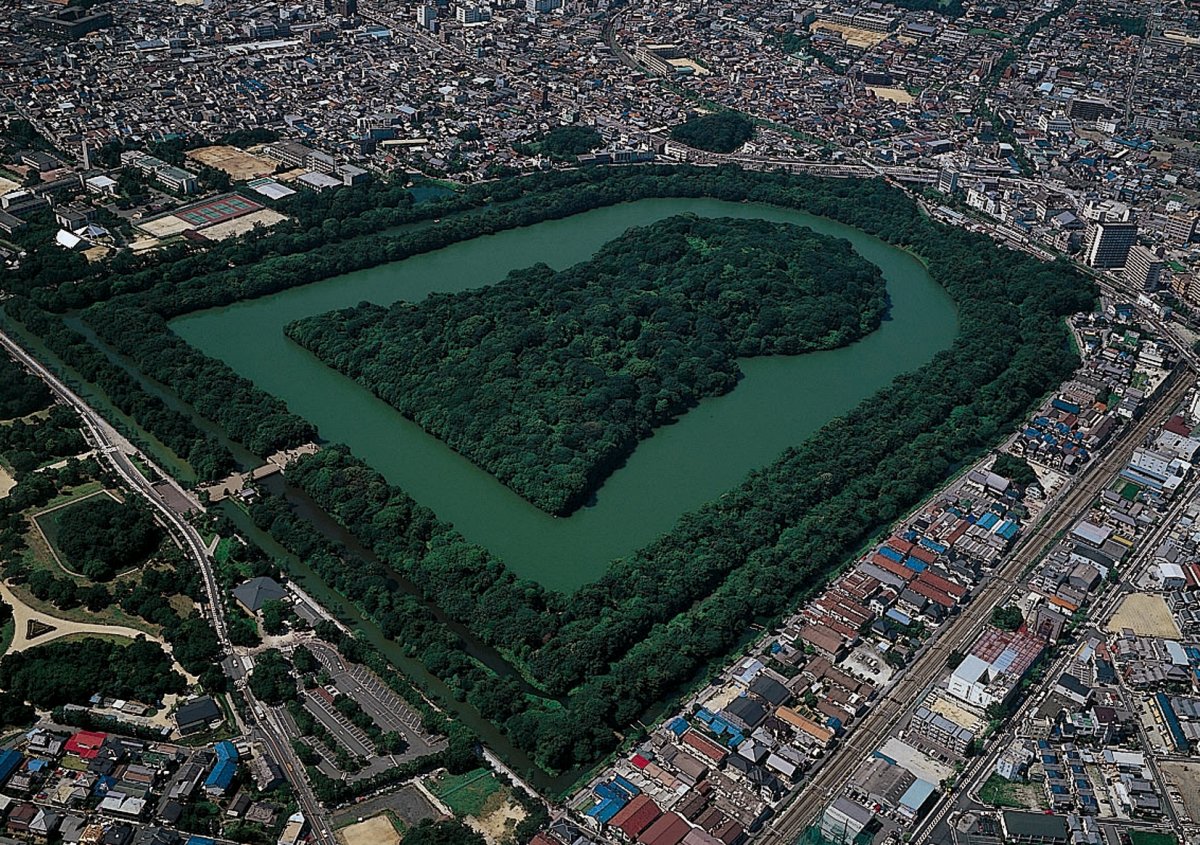
Daisen Kofun, the largest of all kofun, one of many tumuli in the Mozu kofungun, Sakai, Osaka Prefecture (5th century) Image via Osaka.info/wikipedia
These structures can be circular- and square-shaped, and their dimensions also vary from several meters to over 400m.
When viewed from above, the most common type of kofun is shaped like a keyhole (a zempo-koen-fun), having one square end and one circular end.
The Daisen Kofun in Osaka Prefecture, which belongs to Japan's Emperor Nintoku, the 16th emperor, measures about 500 meters (1,640 feet) in length, 249 meters in diameter, 35 meters in height for the back circular mound, 305 meters in width, and 33 meters in height for the front mound. The mound is built with three distinct levels and a space for religious ceremonies, on either side of the narrowest part of the tomb and surrounded by three trenches.
There is about 2.8 kilometer-long walkway encircling the tomb, which takes an hour to walk around.
This colossal tomb is located in the middle of a cluster known as the Mozu Tumuli, which consists of 92 large and small kofun lying within an area of roughly 16 square kilometers (6.2 square miles).
Another group of mounds, located about 10 kilometers (6.2 mi) away from the Mozu cluster, is known as the Furuichi cluster. It has the Ojin-tenno-ryo Kofun of 425 meters (1,394 ft) length, which is the second-largest in the country. This group also has 11 more huge massive rounded "keyhole-shaped kofun" with a mound length of 200 meters (660 ft) or more.
Thousands of kofun burial mounds have been discovered and identified; these date back from the late third to late seventh centuries.
In Japan, there was a common ancient custom to bury people of high social status in kofun tombs covered with large mounds of earth.
The kofun funerary mounds were not only used to bury people but also items made of iron, swords, weapons such as arrowheads, hoe and spade tips, fine armor, glass pots, dishes, and many other similar items.
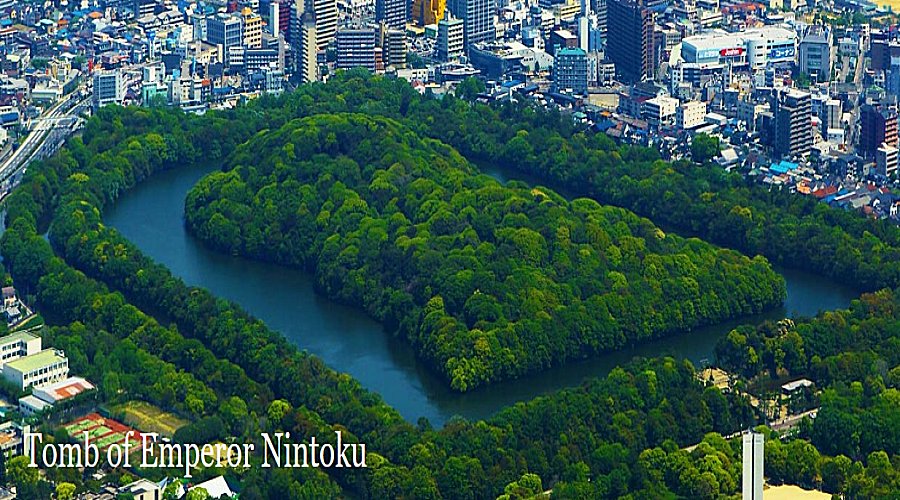
Daisen Kofun, the largest of all kofun, one of many tumuli in the Mozu kofungun, Sakai, Osaka Prefecture (5th century) Image via Osaka.info/wikipedia
Antiquities made of gilded bronze such as horse tacks and sash buckles have also been found in these mounds.
Keyhole-shaped kofun graves disappeared in the late 6th century AD, and are related to the introduction of Buddhism during this era, according to "The Chronicles of Japan" ("Nihon Shoki"), Japan's first national history book.
Recently, archaeologists began to doubt whether this enormous tomb really belonged to Emperor Nintoku.
They have namely, found in the toms, the so-called Sue ware pots, represent making techniques and kilns, which were introduced to Japan from Korea, in the 5th century and these pots were the first high temperature stoneware pots produced in ancient Japan.
Updated on January 20, 2022
Written by – A. Sutherland - AncientPages.com Senior Staff Writer
Copyright © AncientPages.com All rights reserved. This material may not be published, broadcast, rewritten or redistributed in whole or part without the express written permission of AncientPages.com
Expand for referencesMore From Ancient Pages
-
 Never-Before-Seen Face Of A Tattooed Tashtyk Man Hidden Behind A Gypsum Death Mask Revealed
Archaeology | Jul 17, 2020
Never-Before-Seen Face Of A Tattooed Tashtyk Man Hidden Behind A Gypsum Death Mask Revealed
Archaeology | Jul 17, 2020 -
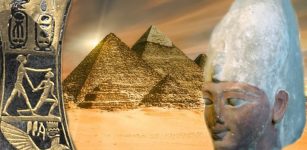 Pharaoh Ahmose I Expelled The Hyksos Invaders And Changed History Of Ancient Egypt
Featured Stories | Mar 16, 2021
Pharaoh Ahmose I Expelled The Hyksos Invaders And Changed History Of Ancient Egypt
Featured Stories | Mar 16, 2021 -
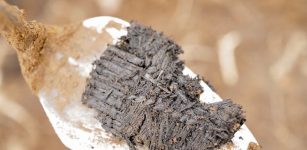 Rare 3,000-Year-Old Weavings Discovered In Alaska
Archaeology | Sep 4, 2023
Rare 3,000-Year-Old Weavings Discovered In Alaska
Archaeology | Sep 4, 2023 -
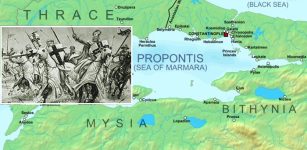 On This Day In History: Battle Of Rhyndacus – Oct 15, 1211
News | Oct 15, 2016
On This Day In History: Battle Of Rhyndacus – Oct 15, 1211
News | Oct 15, 2016 -
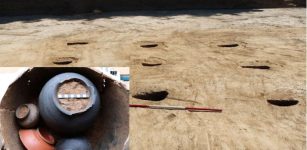 Ancient Roman Settlement Discovered In Deal, UK
Archaeology | Dec 16, 2022
Ancient Roman Settlement Discovered In Deal, UK
Archaeology | Dec 16, 2022 -
 Mabon Festival And The Autumn Equinox Celebrated By Pagans
Ancient Traditions And Customs | Sep 19, 2024
Mabon Festival And The Autumn Equinox Celebrated By Pagans
Ancient Traditions And Customs | Sep 19, 2024 -
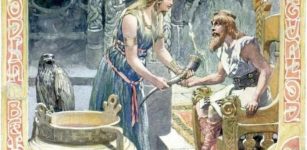 Death Of Kvasir And How Famous Mead Of Poetry Was Created, Stolen And Finally Recovered By Odin
Featured Stories | Apr 14, 2018
Death Of Kvasir And How Famous Mead Of Poetry Was Created, Stolen And Finally Recovered By Odin
Featured Stories | Apr 14, 2018 -
 4,000-Year-Old Serpent-Shaped Wooden Stick Unearthed in Southern Finland
Archaeology | Jun 30, 2021
4,000-Year-Old Serpent-Shaped Wooden Stick Unearthed in Southern Finland
Archaeology | Jun 30, 2021 -
 Aztecs: Facts And History About The Ancient And Powerful Mesoamerican Civilization From Aztlán
Civilizations | Apr 10, 2017
Aztecs: Facts And History About The Ancient And Powerful Mesoamerican Civilization From Aztlán
Civilizations | Apr 10, 2017 -
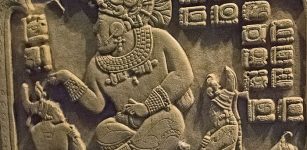 Fall Of The Ancient Maya Civilization Not Caused By Climate Change And Environmental Degradation – Scientists Say
Archaeology | Nov 18, 2021
Fall Of The Ancient Maya Civilization Not Caused By Climate Change And Environmental Degradation – Scientists Say
Archaeology | Nov 18, 2021 -
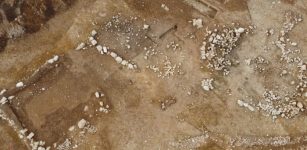 Bronze Age Roundhouses And Roman-Era Settlement Discovered In Newquay, Cornwall
Archaeology | Apr 11, 2023
Bronze Age Roundhouses And Roman-Era Settlement Discovered In Newquay, Cornwall
Archaeology | Apr 11, 2023 -
 Ancient DNA Of Segorbe Giant Reveals A Brutal Event In Medieval Spain
News | Sep 26, 2021
Ancient DNA Of Segorbe Giant Reveals A Brutal Event In Medieval Spain
News | Sep 26, 2021 -
 Cro-Magnon Man Invented First Indoor Lighting – An Unusual But Effective Oil Lamp
Ancient History Facts | Jan 22, 2019
Cro-Magnon Man Invented First Indoor Lighting – An Unusual But Effective Oil Lamp
Ancient History Facts | Jan 22, 2019 -
 Incredible 5,000-Year-Old New-York-Like Metropolis Discovered In Israel
Archaeology | Oct 9, 2019
Incredible 5,000-Year-Old New-York-Like Metropolis Discovered In Israel
Archaeology | Oct 9, 2019 -
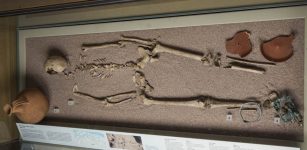 London Was Always A Multicultural City, DNA Research Confirms
Archaeology | Nov 26, 2015
London Was Always A Multicultural City, DNA Research Confirms
Archaeology | Nov 26, 2015 -
 Hasankeyf – 12,000-Year-Old Mesopotamian City Will Be Destroyed – Decision Sparks Outrage And Controversy
Archaeology | Aug 28, 2019
Hasankeyf – 12,000-Year-Old Mesopotamian City Will Be Destroyed – Decision Sparks Outrage And Controversy
Archaeology | Aug 28, 2019 -
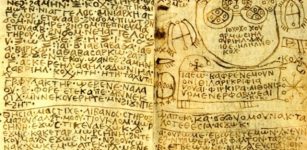 Ancient Mystery Of Baktiotha And The Egyptian Spell Book
Artifacts | Sep 4, 2015
Ancient Mystery Of Baktiotha And The Egyptian Spell Book
Artifacts | Sep 4, 2015 -
 Unraveling The Secret History Of King Arthur And Robin Hood
Featured Stories | Jul 14, 2015
Unraveling The Secret History Of King Arthur And Robin Hood
Featured Stories | Jul 14, 2015 -
 Saqqara New Discoveries: Fifth Dynasty’s Pyramid Complex That Belonged To Queen Setibhor
Archaeology | Apr 15, 2019
Saqqara New Discoveries: Fifth Dynasty’s Pyramid Complex That Belonged To Queen Setibhor
Archaeology | Apr 15, 2019 -
 Gravitational Waves Shed Light On The Mysterious Antikythera Mechanism
News | Jun 29, 2024
Gravitational Waves Shed Light On The Mysterious Antikythera Mechanism
News | Jun 29, 2024

